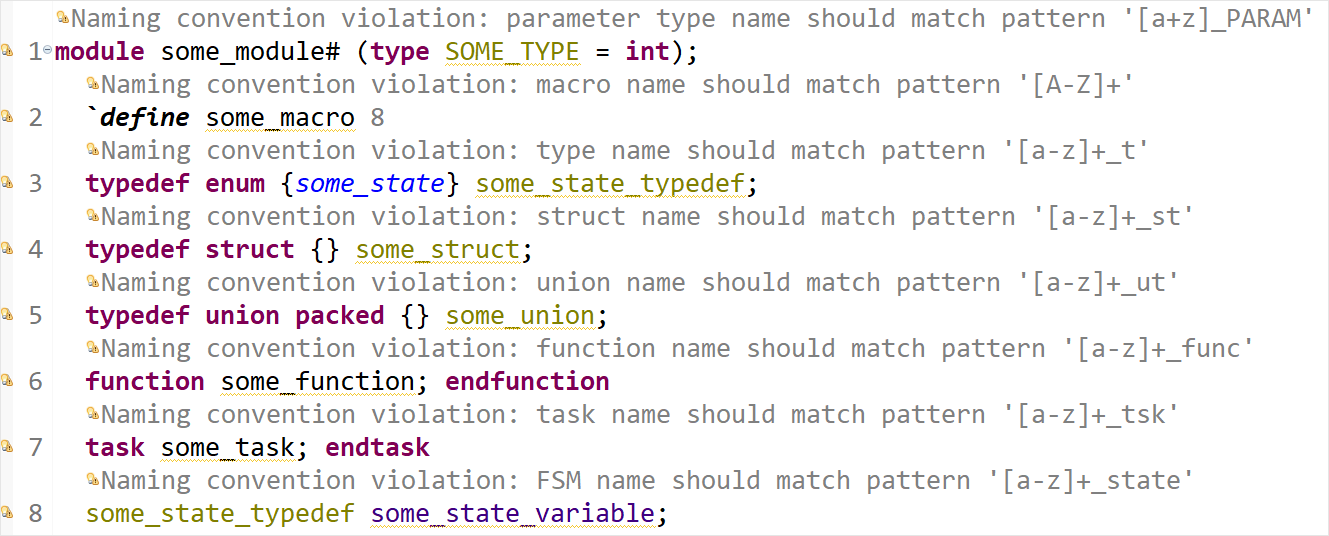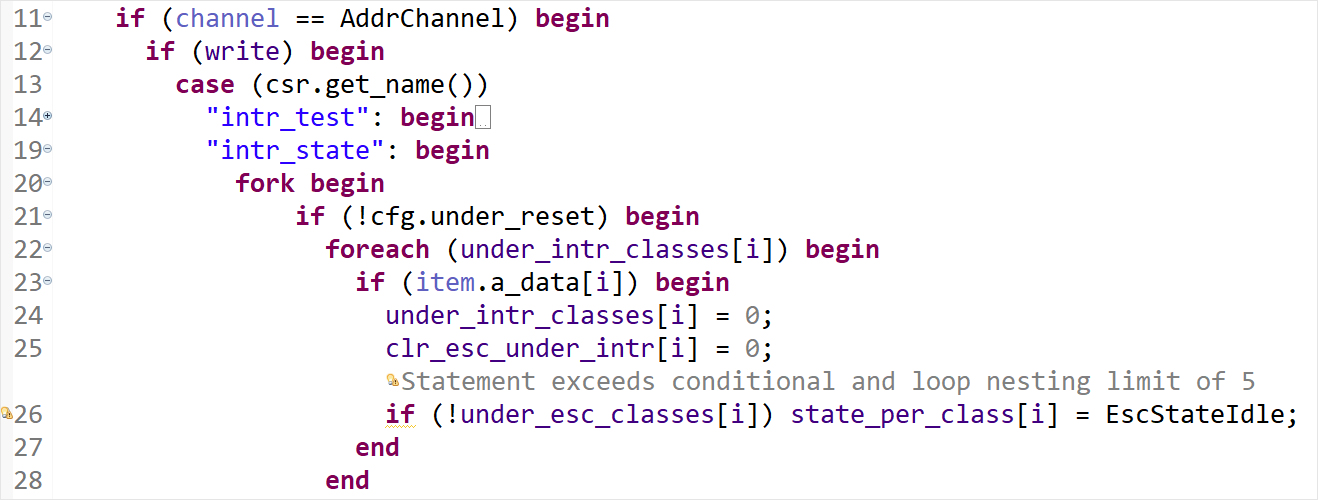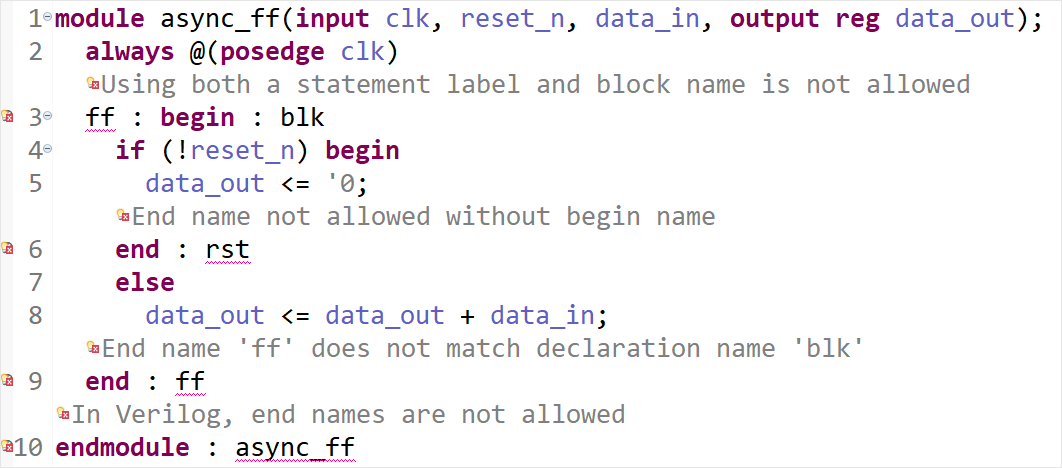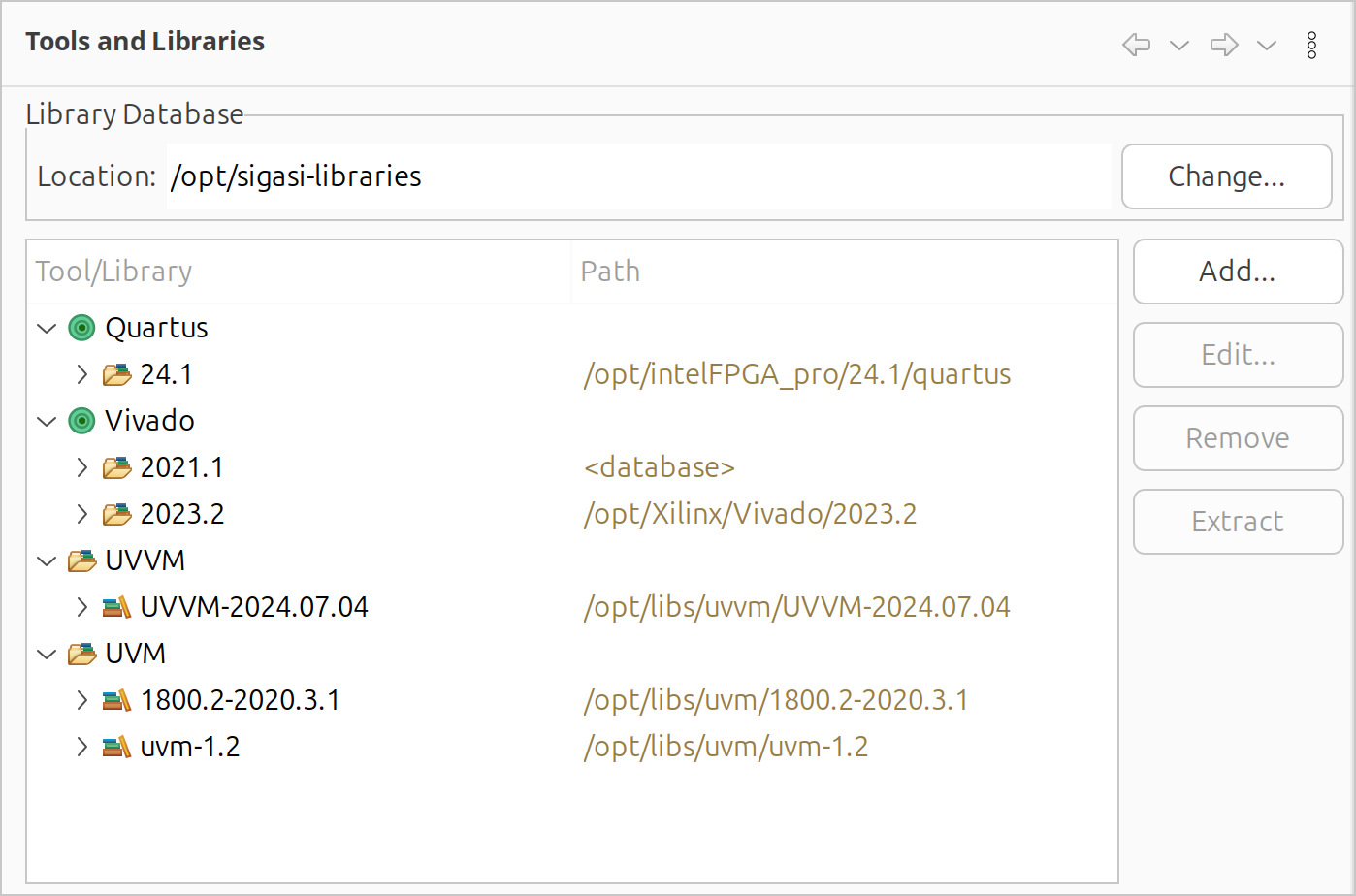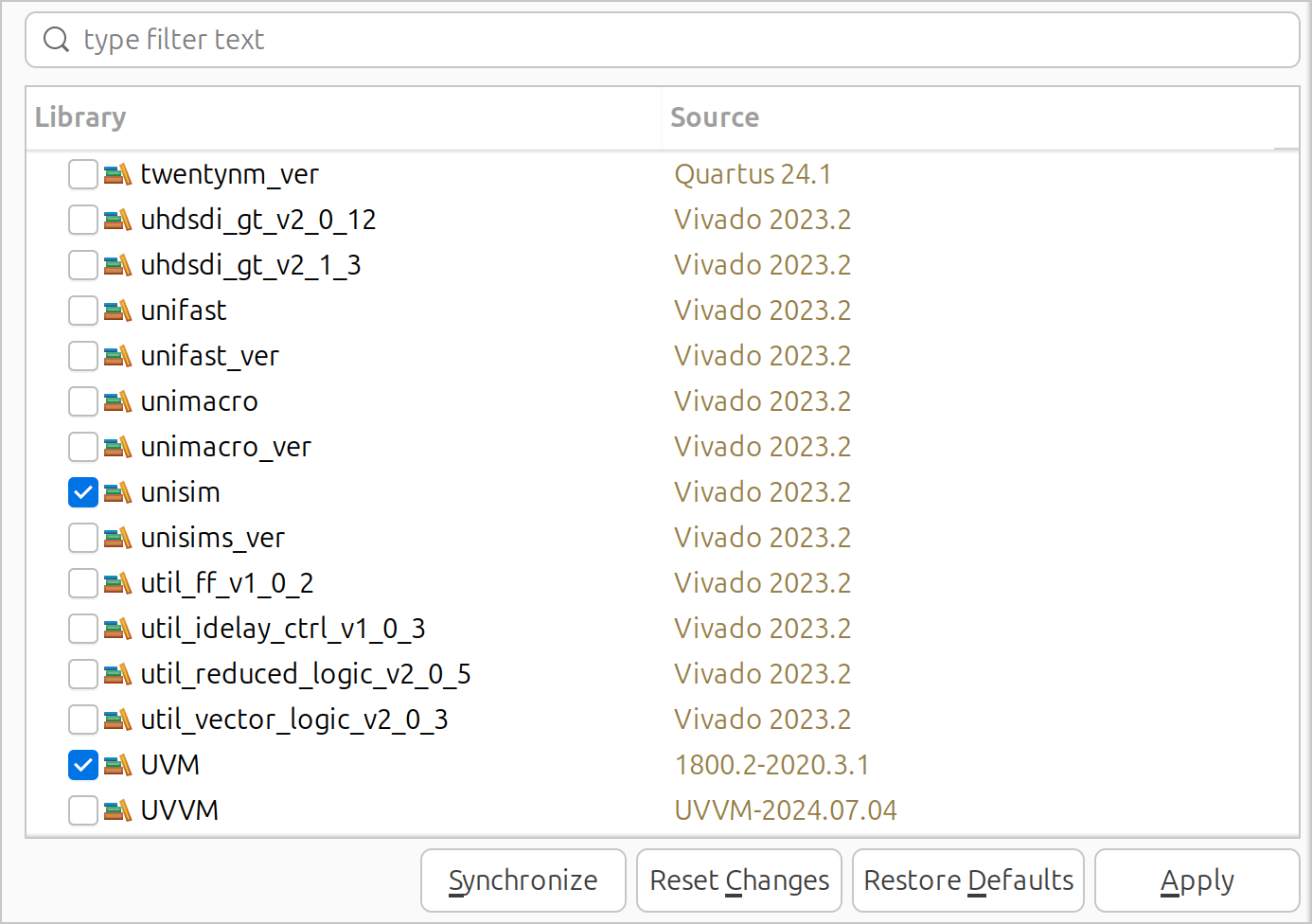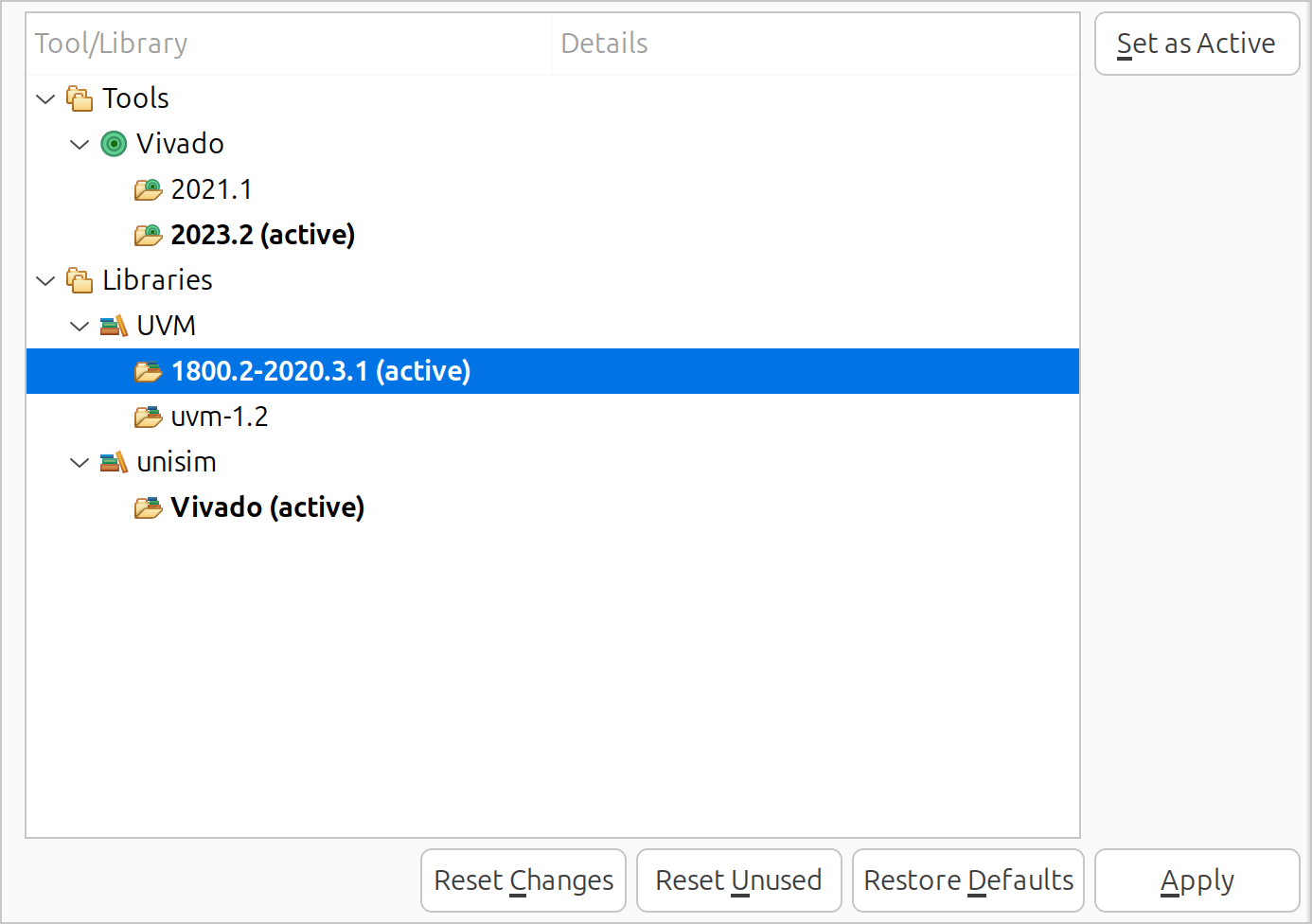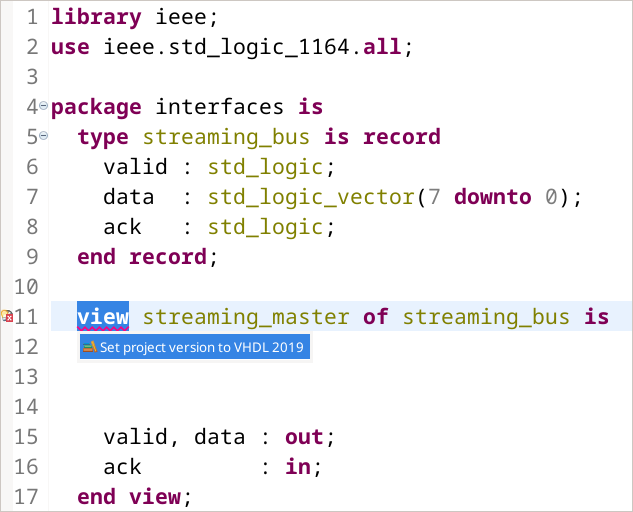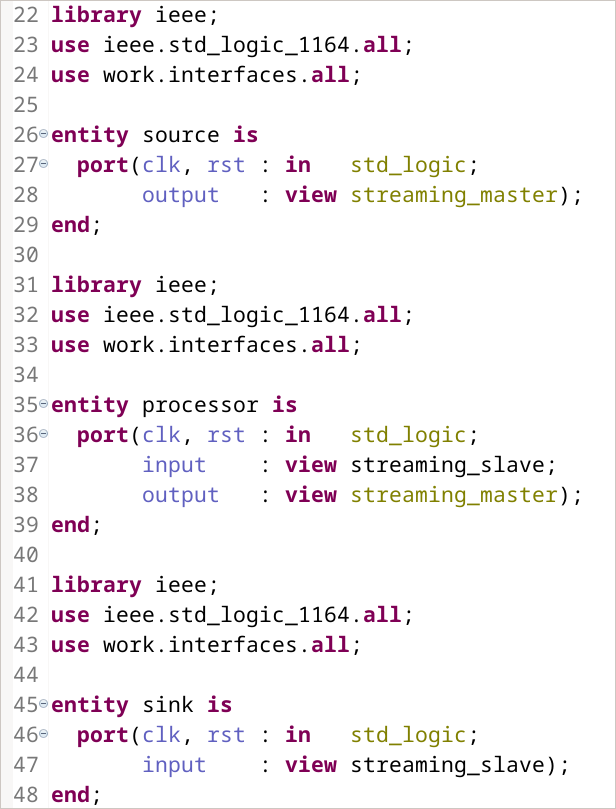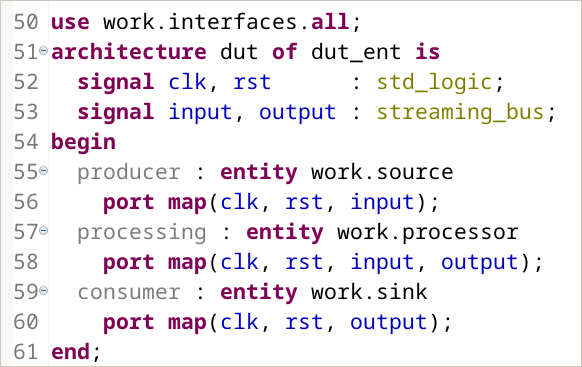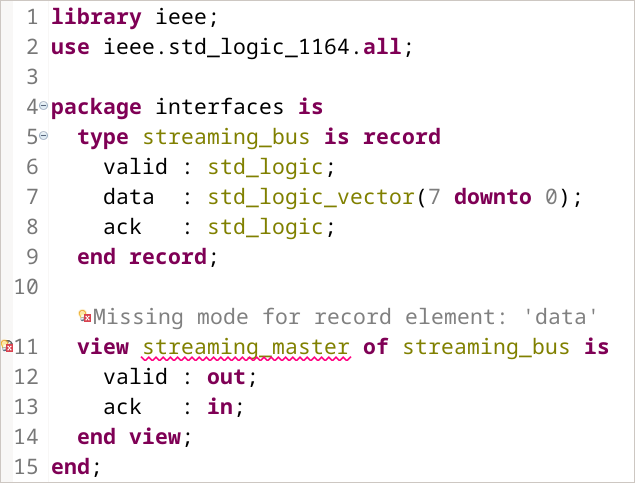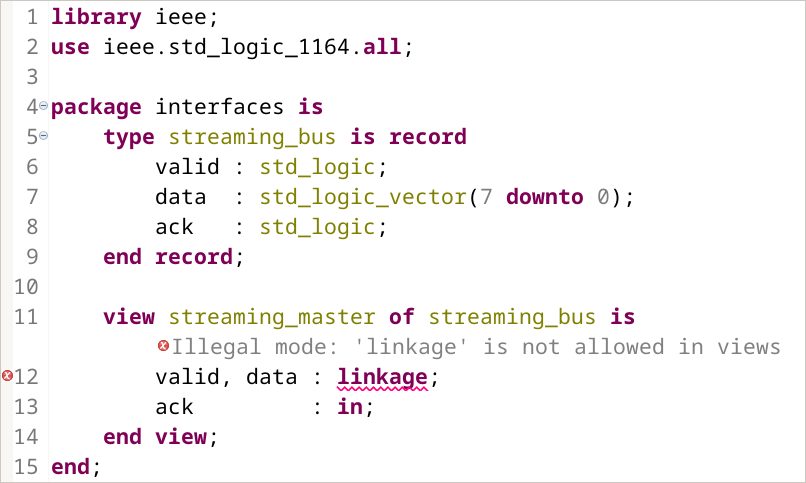The second installment of Sigasi® Visual HDL™ (SVH™) 2024 introduces over a dozen new SystemVerilog linting rules, an improved Tools and Libraries setup flow, and VHDL 2019 Mode Views.
Please note that we will start ramping down support for Eclipse during 2025 to focus exclusively on VS Code for your benefit. This new release has made transitioning from VS Code to Eclipse even easier. We brought numerous improvements to VS Code, like Smart Indentation, performance improvements to autocomplete, and a smoother experience when first using the VS Code extension. Please enjoy and do get in touch with either our Sales Team or Support Team if you need any help transitioning to VS Code.
TL;DR
We’ve added over a dozen new SystemVerilog linting rules. They catch version-specific problems, duplicate signals, inheritance loops, and encourage good coding practices.
SVH now includes a simplified user-flow to set up tools and standalone libraries, use them across multiple projects, and share them with the entire team through a Library Database. We now also support the UVVM library natively (similar to the UVM library).
SVH now supports one of the most useful VHDL 2019 features: Mode Views. Mode views allow you to express interfaces, which drastically improves the readability and maintainability of VHDL designs.
Last but not least, this release includes a wide range of over 40 bug fixes and improvements.
New SystemVerilog Linting Rules and Quick Fixes
SVH linting rules ensure high-quality designs, and with these new additions, your code will be even more reliable and optimized.
New Naming Conventions
Deep Nesting of Conditional and Loop Statements
Order of Named Declaration List Does Not Match
Names Differing Only by Case
Duplicate Signal in Sensitivity List
Include of Globally Available Declaration
Encourage the Usage of Behavior-Specific Always Constructs
always_[comb|latch|ff] constructs introduced with SystemVerilog should be used in favor of the general purpose always. They describe the intent, provide semantics that improve readability, and can be checked for correctness by tools. A Quick Fix makes it easy to adopt this good practice.Check Locally Unused Ports, Parameters, and Arguments
Cyclic Class Inheritance
Various Checks for Labels
Quick Fix to Change Version
Improved Tools and Libraries Setup Flow
The Tools and Libraries settings page lets you add tools and libraries. SVH supports UVM, UVVM, and custom libraries, as well as libraries that are available with Vivado or Quartus installations.
When added, libraries are extracted to a Library Database. You can then share this database among multiple Sigasi projects and distribute it among your team to ensure everyone uses the same library versions. Learn more
Once all the libraries you need are in the Library Database, you can select the libraries you want to use in your project on the Common Libraries project properties (Right-click the project in the Project Explorer and click Properties).
If there are multiple versions of tools or libraries available in the Library Database, you can select the version that a project should use on the Active Tools and Libraries project preference page.
Note this new feature required our internal format to be overhauled.
See our upgrade instructions.
VHDL 2019 Mode Views
Mode views are SVH’s most requested VHDL 2019 feature. They allow you to define the direction of a collection of ports, making not only the type but also the directions reusable. Their closest comparison is SystemVerilog modports. You can start using mode views by configuring your files to VHDL 2019, which is easily done through a Quick Fix. Learn more
Now that the mode views are understood by SVH, we can put them to good use.
Finally, we declare a dut that internally uses the view modes.
You will be pleased to learn that mode views work throughout SVH, from syntax, linting rules, formatting, and hovers to Net Search and Graphical Views.
We even added two new linting rules, ensuring mode views are correctly defined.
Missing Mode for Record Element in Mode View
The VHDL language specification mandates that every member declared in the record must have their direction defined in the associated mode view.
The missing elements can be added through a Quick Fix.
Illegal Mode View Element Mode
linkage as a direction in mode views.Further New and Noteworthy
- Added over 30 new SystemVerilog static templates
- Added over 20 new VHDL static templates
- Changed required license for Documentation View to Designer Edition
- Expanded
Unsorted associationslinting rule to all constructs supporting associations - Disabled the
Configure library xilinxcorelibQuick Fix as it is superseded by the Tools and Libraries feature - Added an option to choose where to generate documentation
Edit License Filenow adds the license in the default location:~/.sigasi.licinstead of in the current workspace- Improved the reliability of Talkback
- VHDL Cleaned up autocomplete labels
- Verilog Improved labels for typedef enums, unions, and structs
Talkback
- Added events when a license is requested or checked
- Added the product type to every message
Bug Fixes
- Fixed issues with the Talkback server becoming unavailable and incorrectly disabling the license
- Fixed some typos
- Fixed license detection when there are empty entries
- Scheduled a build after changes to the
Minimal License to Checkout - Fixed incorrect semantic highlighting in rare cases
- Fixed the version number in generated documentation
- VHDL Redirect to the original
unisim_retarget_VCOMP.vhdinstead ofretarget_VCOMP.vhdwhen the protectedunisim_retarget_VCOMP.vhdpis referenced - VHDL Fixed the
Update VHDL versionQuick Fix for external files - VHDL Fixed highlighting for
Show in > Outline - VHDL Fixed hovers for VHDL 2019 conditional variables
- VHDL Fixed missing FSM dead state detection
- VHDL Fixed
Set as Top Levelwhen the matching entity is in a different file - VHDL Fixed missing hover for large physical literal values, e.g,
3333 min - VHDL Fixed false positive “No matching subprogram was found” error for protected type bodies
- VHDL Removed
Add DeclarationQuick Fix from character literals - Verilog Consistently use
Verilog/SystemVerilogto refer to Verilog and/or SystemVerilog - Verilog Fixed recognition of include files starting with a colon character
- Verilog Fixed navigation through double-click for Verilog items in the Hierarchy View
- Verilog Fixed false positive deprecated macro warnings in disabled preprocessor branches
Upgrade Instructions
The VHDL linting rule 94 was changed from ignored to info. If you see more info issues and you would like to revert to the old behavior, you can do so by configuring the severity of the Incomplete port map or generic map: using defaults linting rule to ignore in the Project Preference View.
The libraries extracted in SVH 2024.1 are not compatible with SVH 2024.2. To migrate, rerun the extraction in SVH 2024.2 and synchronize project configuration for libraries. If you have not yet used library extraction or have not used SVH 2024.1, no action is required. Learn more
Upgrading to 2024.2.1
If you previously set the License to check out setting to either Professional or Enterprise, you must
manually toggle Enable UVM linting in order to show UVM linting results again.
Sigasi Visual HDL 2024.2.1 Point Release
On October 15, we released Sigasi Visual HDL 2024.2.1. This release contains the following changes and bug fixes:
- Fixed issue where content of packages with the same name was being merged in Libraries View
- Improved VHDL FSM templates
- Added progress visualization and cancelation for Vivado libraries extraction process
- Removed
License To Check Outsetting - Added
Enable UVM Lintingsetting. See upgrade instructions for more on how to use this new setting. - Introduced
Check generics,Check ports, andCheck parametersarguments from VHDL linting rule 164, and rename description. Parameters are not checked by default.
The enablement of UVM linting rules was overhauled. See our upgrade instructions.
Sigasi Visual HDL 2024.2.2 Point Release
On November 12, we released Sigasi Visual HDL 2024.2.2. This release contains the following changes and bug fixes:
- Fixed invalidating of all licenses requiring an up-to-date version
- Added better feedback when enabling UVM linting
- Added an anonymous identifier to Talkback message to identify messages coming from the same user
Update or Install
You can download the stand-alone version of the latest preview.
- Linux: https://download.sigasi.com/sigasi-studio/preview/latest/com.sigasi.hdt.product-linux.gtk.x86_64.zip
- Windows: https://download.sigasi.com/sigasi-studio/preview/latest/com.sigasi.hdt.product-win32.win32.x86_64.zip
You can also update automatically when setting Preferences > Install/Update > Available Software Sites > Add… :
https://download.sigasi.com/sigasi-studio/preview/composite/
SHA sums (more info) can be checked via https://download.sigasi.com/sigasi-studio/preview/latest/eclipse-sha1.txt .
System Requirements
Sigasi Visual HDL in Eclipse requires:
- Windows 10 or Windows 11 64-bit
- Red Hat Enterprise Linux RHEL 8 or 9 64-bit
- Sigasi Visual HDL depends on
libXss.so, which is obtainable by installinglibXScrnSaver - Sigasi Visual HDL depends on
webkit2gtk4.0, which is installable through your package manager of choice - You can find more information on supported Linux Operating Systems on the Eclipse website
- Sigasi Visual HDL depends on
Sigasi Visual HDL as a plugin in your existing Eclipse installation requires:
- Eclipse IDE 2021-03 up to and including Eclipse IDE 2024-09
- Java JRE 11 or 17
We recommend having at least 8GB of memory and about 1GB of free disk space available for Sigasi Visual HDL.
Feedback
We welcome your feedback through the usual channels or the comments below. Note that we clear the comments on this page after each official release.
